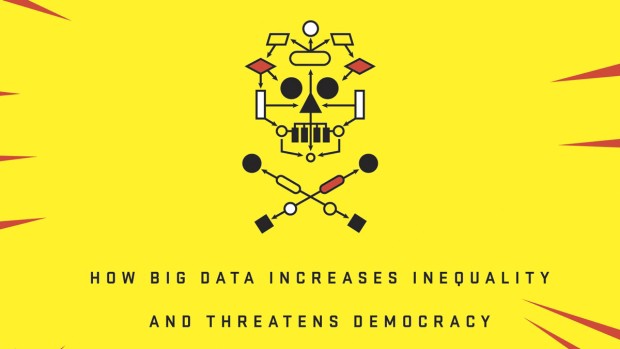
I haven’t read it, but Cathy O’Neil’s ‘Weapons of Math Destruction‘ is a great title for a book. Here’s what one reviewer wrote:
Cathy O’Neil an experienced data scientist and mathematics professor illustrates the pitfalls of allowing data scientists to operate in a moral and ethical vacuum including how the poor and disadvantaged are targeted for payday loans, high cost insurance and political messaging on the basis of their zipcodes and other harvested data.
So, WOMD shows how the data-based algorithms that increasingly form the fabric of our lives – from Google to Facebook to banks to shopping to politics – and the statistical methodology behind them are actually pushing societies in the direction of greater inequality and reduced democracy.
At the time of writing WOMD these arguments were still in their infancy; but now we are starting to live the repercussions of the success of the campaign to remove Britain from the EU – which was largely driven by a highly professional exercise in Data Science – they seem much more relevant and urgent.
Anyway, Cathy O’Neil herself recently gave an interview to Bloomberg. Unfortunately, you now have to subscribe to read the whole article, so you won’t see much if you follow the link. But it was an interesting interview for various reasons. In particular, she discussed the trigger which led her to a love of data and mathematics. She wrote that when she was nine her father showed her a mathematics puzzle. And solving that problem led Cathy to a lifelong appreciation of the power of mathematical thinking. She wrote..
… I’ve never felt more empowered by anything since.
It’s more of a mathematical than a statistical puzzle, but maybe you’d like to think about it for yourself anyway…
Consider this diagram:

It’s a chessboard with 2 of the corner squares removed. Now, suppose you had a set of 31 dominoes, with each domino being able to cover 2 adjacent horizontal or vertical squares. Your aim is to find a way of covering the 62 squares of the mutilated board with the 31 dominoes. If you’d like to try it, mail me with either a diagram or photo of your solution; or, if you think it can’t be done, mail me an explanation. I’ll discuss the solution in a future post.
